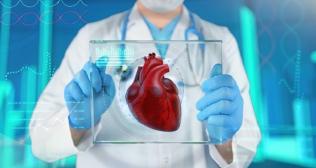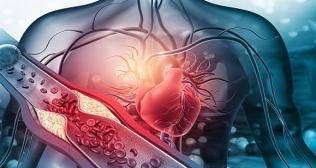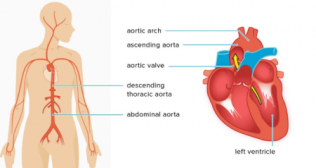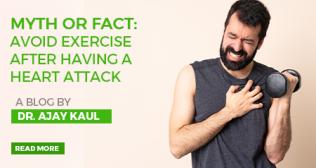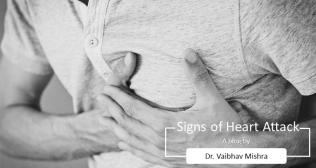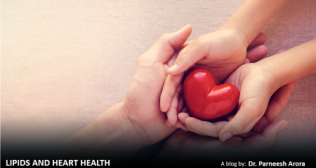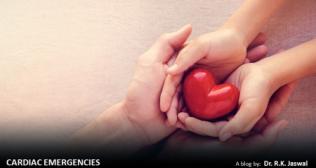
Exploring Cardiac Imaging: Procedures, Applications, and Benefits
Introduction
Cardiac imaging is the most important tool for diagnosing and treating heart diseases, providing a detailed visual view of the structure, function, and blood flow in the heart. Advanced MRI and CT and non-invasive methods like echocardiograms allow doctors to accurately assess heart health. Thus, earlier diagnosis and appropriate treatment can be provided through cardiac imaging, which significantly improves patient care and the outcome of the illness.
Types of cardiac imaging
Echocardiography (Echo)
Echocardiography is among the most widely used cardiac imaging techniques. It uses sound waves, commonly known as ultrasound, to generate images of the heart in real-time. A standard echocardiogram provides information regarding the size, structure, and pumping capability of the heart.
Cardiac magnetic resonance imaging (CMR)
Cardiac MRI is a non-invasive imaging technique that helps one evaluate the anatomy of the heart, detect inflammation, and assess myocardial viability based on high-resolution images.
Cardiac computed tomography (CT)
Cardiac CT or heart CT include the utilisation of X-ray technology to produce 3D images of the heart and all its vessels. It is widely used in diagnosing CAD, as it offers detailed views of the coronary arteries and supports the evaluation of plaque buildup and arterial narrowing.
Nuclear cardiology (SPECT & PET scans)
More commonly used are two types of imaging: SPECT, for Single Photon Emission Computed Tomography, and PET, for Positron Emission Tomography. These imaging techniques are used to assess heart muscle viability and to identify the portions of the heart not receiving adequate blood supply, generally in patients with coronary artery disease.
Cardiac catheterisation with angiography
This process is invasive in its nature: The catheter is introduced through the groin or wrist into the coronary arteries, and contrast dye is used to view coronary arteries. Cardiac catheterisation can be combined with an angiogram to evaluate the blockages, narrowing, or any other abnormalities of the heart’s arteries.
Procedures in cardiac imaging
Each cardiac imaging technique has a certain protocol according to the type of test undertaken. For instance:
- Echocardiography: Patients prefer lying on the left side. A technician applies a gel at the chest region for free movement of a transducer, which captures an image of the heart.
- Cardiac MRI: The patient would lie inside a huge MRI machine. It would then use magnetic fields to capture detailed images. Contrast injection might be required for better visualisation.
- Cardiac CT: The patients would lie on the table, which slides into a scanner. Contrast dye may be used to highlight the coronary arteries in order to achieve a better image.
- Nuclear imaging: A small amount of radioactive material is injected, and it emits more radiation that is captured by specialised cameras to create images.
- Cardiac catheterisation: A catheter is inserted through a small incision, commonly in the groin or arm, and passed along the blood vessels into the heart for imaging and possible treatment.
Applications of cardiac imaging
Cardiac imaging is helpful for the diagnosis and management of several heart-related conditions, which include:
- Coronary artery disease (CAD): Images will assess for obstructions, narrowing of the arteries, and plaque buildup inside the arteries, thereby creating a reason for placing stents or bypass surgery.
- Heart failure: Echocardiography and MRI are essential procedures for diagnosing the pumping efficiency of the heart and structural changes that may cause heart failure.
- Congenital heart disease: Cardiac imaging is crucial in the diagnosis of birth defects affecting the structure of the heart, commonly prevalent in children, allowing them to undergo early intervention procedures.
- Valvular disease: Echocardiography can be applied in the assessment of heart valve function and flaws in the condition that may require surgical intervention or be replaced.
- Cardiomyopathy: Heart muscle disease condition is assessed using cardiac MRI scan and echocardiography, thus finding the disease at an early stage and treating it.
- Cardiac tumours: Identification and assessment of a tumour in or around the heart are done using a CT and an MRI scan.
Advantages of cardiac imaging
There are numerous advantages of cardiac imaging, including:
- Non-invasive options
- Early detection
- Improved treatment outcome
- Monitoring disease progression
- Minimised risk
Conclusion
Cardiac imaging is one of the novel technologies in modern cardiology, showing a range of techniques used for clarification of the structure and function of the heart. Imaging technologies are diagnostic and therapeutic adjuncts in coronary artery disease, an assessment of heart failure, and follow-up of heart diseases. The achievements of technology would undoubtedly extend the role of cardiac imaging even further in the diagnosis and treatment of cardiovascular diseases.
Popular Searches :
Hospitals: Cancer Hospital in Delhi | Best Heart Hospital in Delhi | Hospital in Amritsar | Hospital in Ludhiana | Hospitals in Mohali | Hospital in Faridabad | Hospitals in Gurgaon | Best Hospital in Jaipur | Hospitals in Greater Noida | Hospitals in Noida | Best Kidney Hospital in Kolkata | Best Hospital in Kolkata | Hospitals in Rajajinagar Bangalore | Hospitals in Richmond Road Bangalore | Hospitals in Nagarbhavi Bangalore | Hospital in Kalyan West | Hospitals in Mulund | Best Hospital in India | | Cardiology Hospital in India | Best Cancer Hospital in India | Best Cardiology Hospital in India | Best Oncology Hospital In India | Best Cancer Hospital in Delhi | Best Liver Transplant Hospital in India
Doctors: Dr. Rana Patir | Dr. Rajesh Benny | Dr. Rahul Bhargava | Dr. Jayant Arora | Dr. Anoop Misra | Dr. Manu Tiwari | Dr. Praveer Agarwal | Dr. Arup Ratan Dutta | Dr. Meenakshi Ahuja | Dr. Anoop Jhurani | Dr. Shivaji Basu | Dr. Subhash Jangid | Dr. Atul Mathur | Dr. Gurinder Bedi | Dr. Monika Wadhawan | Dr. Debasis Datta | Dr. Shrinivas Narayan | Dr. Praveen Gupta | Dr. Nitin Jha | Dr. Raghu Nagaraj | Dr. Ashok Seth | Dr. Sandeep Vaishya | Dr. Atul Mishra | Dr. Z S Meharwal | Dr. Ajay Bhalla | Dr. Atul Kumar Mittal | Dr. Arvind Kumar Khurana | Dr. Narayan Hulse | Dr. Samir Parikh | Dr. Amit Javed | Dr. Narayan Banerjee | Dr. Bimlesh Dhar Pandey | Dr. Arghya Chattopadhyay | Dr. G.R. Vijay Kumar | Dr Ashok Gupta | Dr. Gourdas Choudhuri | Dr. Sushrut Singh | Dr. N.C. Krishnamani | Dr. Atampreet Singh | Dr. Vivek Jawali | Dr. Sanjeev Gulati | Dr. Amite Pankaj Aggarwal | Dr. Ajay Kaul | Dr. Sunita Varma | Dr. Manoj Kumar Goel | Dr. R Muralidharan | Dr. Sushmita Roychowdhury | Dr. T.S. MAHANT | Dr. UDIPTA RAY | Dr. Aparna Jaswal | Dr. Ravul Jindal | Dr. Savyasachi Saxena | Dr. Ajay Kumar Kriplani | Dr. Nitesh Rohatgi | Dr. Anupam Jindal
Specialties: Heart Lung Transplant | Orthopedic | Cardiology Interventional | Obstetrics & Gynaecology | Onco Radiation | Neurosurgery | Interventional Cardiology | Gastroenterologist in Jaipur | Neuro Physician | Gynecologist in Kolkata | Best Neurologist in India | Liver Transfer | Best Cardiologist in Delhi







